ptpdprinter
Mentor
I was using an Olympus bellows, slide copier,, and macro lens. Plenty of precision gearing. The difficulty was focusing consistently in either the viewfinder or on the rear screen of my mirrorless camera, which is why I suggested an autofocus lens would be helpful.True. In Macro photography with a bellows, it's best to move the lens to achieve the correct magnification, then move the camera to achieve focus. Many bellows units do not have a precision gear driven focus on the rear (camera) standard, most of the lower priced ones don't have an adjustable rear standard at all, so they'll be very difficult to use.
Dogman
Mentor
I hate scanning. But I've gotten really great results from using a Nikon D810 with 60/2.8 Micro Nikkor and the Nikon ES2 film digitizer.
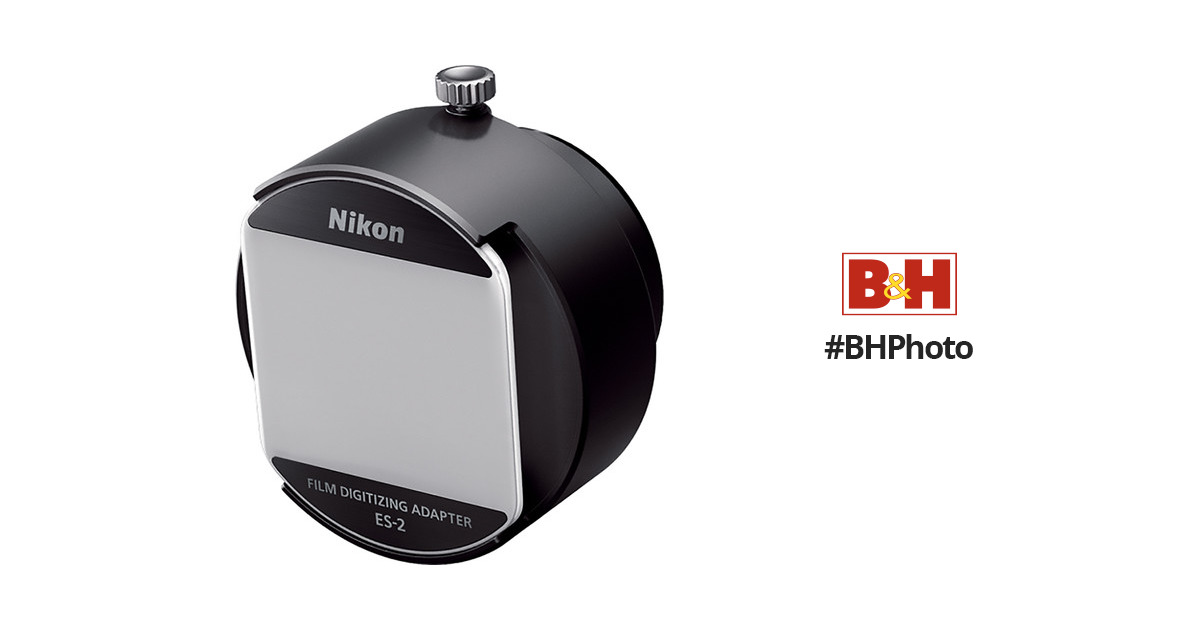
 www.bhphotovideo.com
www.bhphotovideo.com
Put the camera on Auto ISO and Auto white balance, go outside and aim it at a featureless section of the sky. Fire away.
Couple of Kodachromes from the 1970s:
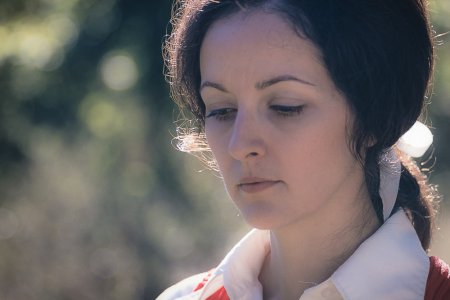
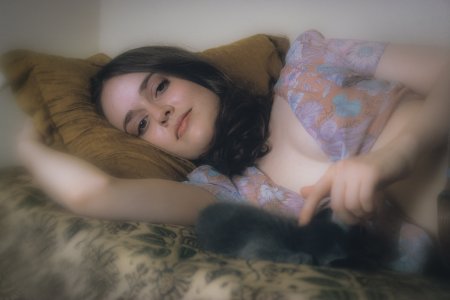

Nikon ES-2 Film Digitizing Adapter Set
Buy Nikon ES-2 Film Digitizing Adapter Set featuring Convert Film to Digital Files, Holders for 35mm Film Strips and Slides, For Use with Select Nikon Micro Lenses, Ideal for D850 Negative Digitizer Mode. Review Nikon null
Put the camera on Auto ISO and Auto white balance, go outside and aim it at a featureless section of the sky. Fire away.
Couple of Kodachromes from the 1970s:


boojum
Mentor
Using the bellows/lens setup may very well yield better results, when it can be made to work. And there's the rub. From what I am reading the effort yields great results but is demanding. OTOH the scanner is just pop the slides, four, into the machine, press the button and wait for the scan to finish. I do not know about you but option 2, the scanner, has a greater appeal.
Has anyone compared the output of each in a side-by-side test?
And I would still scan the whole lot. These are a record of my 35mm life from '54 to ~99. Vacations, parties, the motorcycle trip from CT to CA when I moved to the West Coast and all sorts of other stuff. There may even be a couple of good photos in that mess. Everybody should go coast to coast on a motorcycle at least once in their lives. LOL Years later in Arizona I ran across Volker Bier and his motorcycle tour coming out of Canyon de Chelly. They said to join up so I did and we were traveling at 100MPH+ cruising speed. After about a half hour of that I found something less exciting to do. I was OK with "doing the ton" (100MPH) but preferred doing it on better roads than out on the res.
Yeah, no lightbox, just scan and peep seems the path. Rode those Beemers all over the Southwest. There is some gorgeous country out there. Just be careful out on the res as not all those folks are happy to see us. The part of me that is Delaware is not enough to count or save my sorry ass.
I will have to get a second large cardboard box and bring up the slides a few small boxes at a time. The whole box full is large, and heavy. Whatever method I use this will keep me busy on rainy, and sunny, days. But better in the evening when there is less to photograph.
Has anyone compared the output of each in a side-by-side test?
And I would still scan the whole lot. These are a record of my 35mm life from '54 to ~99. Vacations, parties, the motorcycle trip from CT to CA when I moved to the West Coast and all sorts of other stuff. There may even be a couple of good photos in that mess. Everybody should go coast to coast on a motorcycle at least once in their lives. LOL Years later in Arizona I ran across Volker Bier and his motorcycle tour coming out of Canyon de Chelly. They said to join up so I did and we were traveling at 100MPH+ cruising speed. After about a half hour of that I found something less exciting to do. I was OK with "doing the ton" (100MPH) but preferred doing it on better roads than out on the res.
Yeah, no lightbox, just scan and peep seems the path. Rode those Beemers all over the Southwest. There is some gorgeous country out there. Just be careful out on the res as not all those folks are happy to see us. The part of me that is Delaware is not enough to count or save my sorry ass.
I will have to get a second large cardboard box and bring up the slides a few small boxes at a time. The whole box full is large, and heavy. Whatever method I use this will keep me busy on rainy, and sunny, days. But better in the evening when there is less to photograph.
Godfrey
somewhat colored
Scanning film and transparencies, whether with copy-camera approach or with a flat bed or dedicated film scanner, is never a "pop the slides into the machine, press the button, and wait for the scan to finish" proposition. There is always setup, configuration, and careful tailoring of the scan parameters required to achieve optimal results.Using the bellows/lens setup may very well yield better results, when it can be made to work. And there's the rub. From what I am reading the effort yields great results but is demanding. OTOH the scanner is just pop the slides, four, into the machine, press the button and wait for the scan to finish. I do not know about you but option 2, the scanner, has a greater appeal.
Has anyone compared the output of each in a side-by-side test?
And I would still scan the whole lot. These are a record of my 35mm life from '54 to ~99. Vacations, parties, the motorcycle trip from CT to CA when I moved to the West Coast and all sorts of other stuff. There may even be a couple of good photos in that mess. Everybody should go coast to coast on a motorcycle at least once in their lives. LOL Years later in Arizona I ran across Volker Bier and his motorcycle tour coming out of Canyon de Chelly. They said to join up so I did and we were traveling at 100MPH+ cruising speed. After about a half hour of that I found something less exciting to do. I was OK with "doing the ton" (100MPH) but preferred doing it on better roads than out on the res.
Yeah, no lightbox, just scan and peep seems the path. Rode those Beemers all over the Southwest. There is some gorgeous country out there. Just be careful out on the res as not all those folks are happy to see us. The part of me that is Delaware is not enough to count or save my sorry ass.
I will have to get a second large cardboard box and bring up the slides a few small boxes at a time. The whole box full is large, and heavy. Whatever method I use this will keep me busy on rainy, and sunny, days. But better in the evening when there is less to photograph.
In answer to your question, yes. I've been working processes of scanning film since 1984 and have done many, many side-by-side tests of different capture hardware and configurations. I specifically did comparisons and workflow development of these sorts of scanning processes for clients (for pay...) as a part of my photographic business in the 2006 to 2011 time frame.
The copy camera approach will work every time, always, and with today's capture tools (high resolution sensors used with a good macro setup) will outperform even my Nikon Coolscan V ED film scanner, never mind *any* flatbed scanner. It simply takes some learning and understanding to set it up. I know this for a fact. There are many situations where the film scanner, and certainly the flatbed scanner, simply cannot produce output that is comparable, due to limitations of the hardware that do not exist for the simpler copy camera approach.
I see you are or were a motorcyclist. I rode for decades, all over the US, Canada, and Mexico, even around the UK and Europe a few times. Mostly on Ducati and Moto Guzzi machines, although I had BMW R75/5 and R90S bikes for a bit... I preferred riding the Italian bikes for their better handling, but all did pretty well for me. I retired from motorcycle riding, moved to bicycling and restoring an Italian classic car (Lancia Fulvia Coupé) a few years back.
G
boojum
Mentor
My big
While any tool takes time to set up and learn there are different length learning curves and different degrees of ease of use. I am hoping that someone not only tested scanner vs macro but has the results to share. If I am going to copy nearly a half century's worth of slides I'd like it to be the better method within reason. I am sure I could get a Phase One plus a nice Rodenstock and get some killer copies. But there is only so much detail in these slides, Voigtländer Vito II, K1000, ME Super, Olympus XA3 and an old Canon Demi, and maybe an old Olympus Stylus. If there were a lot of detail in these slides I'd be more eager for the macro approach but I have to balance a few variables.
OTOH I could just put it off, die, and have them all thrown out. The digital images will all be lost eventually but I will have seen them in the process of making them. And I think I remember some good ones from China. It will be a project of fun and busywork.
Scoots were a '67 BMW R69S that did the coast to coast run, across Utah at a ton and better. I traded that in on an '82 R100RT, new (Cal BMW, Mountainview), which I rode for a few years and then sold. The R69S (662191) handled well, the R100RT not as well. The old Earles fork worked just fine, it was the best bike I ever owned. But the reflexes are gone now and out here there is either a pickup or an elk around the curve. Bikes lose on that contest every time.Scanning film and transparencies, whether with copy-camera approach or with a flat bed or dedicated film scanner, is never a "pop the slides into the machine, press the button, and wait for the scan to finish" proposition. There is always setup, configuration, and careful tailoring of the scan parameters required to achieve optimal results.
In answer to your question, yes. I've been working processes of scanning film since 1984 and have done many, many side-by-side tests of different capture hardware and configurations. I specifically did comparisons and workflow development of these sorts of scanning processes for clients (for pay...) as a part of my photographic business in the 2006 to 2011 time frame.
The copy camera approach will work every time, always, and with today's capture tools (high resolution sensors used with a good macro setup) will outperform even my Nikon Coolscan V ED film scanner, never mind *any* flatbed scanner. It simply takes some learning and understanding to set it up. I know this for a fact. There are many situations where the film scanner, and certainly the flatbed scanner, simply cannot produce output that is comparable, due to limitations of the hardware that do not exist for the simpler copy camera approach.
I see you are or were a motorcyclist. I rode for decades, all over the US, Canada, and Mexico, even around the UK and Europe a few times. Mostly on Ducati and Moto Guzzi machines, although I had BMW R75/5 and R90S bikes for a bit... I preferred riding the Italian bikes for their better handling, but all did pretty well for me. I retired from motorcycle riding, moved to bicycling and restoring an Italian classic car (Lancia Fulvia Coupé) a few years back.
G
While any tool takes time to set up and learn there are different length learning curves and different degrees of ease of use. I am hoping that someone not only tested scanner vs macro but has the results to share. If I am going to copy nearly a half century's worth of slides I'd like it to be the better method within reason. I am sure I could get a Phase One plus a nice Rodenstock and get some killer copies. But there is only so much detail in these slides, Voigtländer Vito II, K1000, ME Super, Olympus XA3 and an old Canon Demi, and maybe an old Olympus Stylus. If there were a lot of detail in these slides I'd be more eager for the macro approach but I have to balance a few variables.
OTOH I could just put it off, die, and have them all thrown out. The digital images will all be lost eventually but I will have seen them in the process of making them. And I think I remember some good ones from China. It will be a project of fun and busywork.
Godfrey
somewhat colored
Tests, for me, are typically something I do quickly to ascertain something. Once done, they're not worth saving, unless I did them for someone else or for publication at the get go. I did a quick search to see if any of my last round of tests were still in my LR database, but no: I deleted them after I found what I was looking for, as usual.
Here's my bottom line:
In the end, IMO: Scanning is the least interesting part of the film to digital process. Given a usable level of quality, I'd rather it go faster and spend more time enjoying the photos, finding the good ones, and rendering those to a finish product for sharing.
Enjoy whatever you decide upon.
G
... Ah, Cal BMW. I haven't been there since Kari Prager passed away. He was a good friend of mine, we'd often go on rides together. He loved my Moto Guzzis and Ducatis too.
Here's my bottom line:
- Setting up a copy camera scan session takes me about 20 min, including testing.
- Scanning 100 exposures with the copy camera takes about 20 minutes after setup.
- Setting up the Nikon Coolscan V takes me about 10 min, including testing.
- Scanning 100 exposures with the Coolscan takes at least two hours after setup.
In the end, IMO: Scanning is the least interesting part of the film to digital process. Given a usable level of quality, I'd rather it go faster and spend more time enjoying the photos, finding the good ones, and rendering those to a finish product for sharing.
Enjoy whatever you decide upon.
G
... Ah, Cal BMW. I haven't been there since Kari Prager passed away. He was a good friend of mine, we'd often go on rides together. He loved my Moto Guzzis and Ducatis too.
Glenn2
Well-known
A few years ago I decided to compare the results from my Nikon CS-5000 to what could be gotten from a Nikon D800E with 60mm micro-Nikkor
The setup I used with the camera was a crude integrating sphere made from an ice cream carton with openings cut for the slide to lay over and another for a SB800 flash. An addition hole provided a place for small LED flashlight for focusing purposes. The flash on an extension cord took advantage of through the lens exposure.

First the CS-5000 which was scanned at 4000 DPI
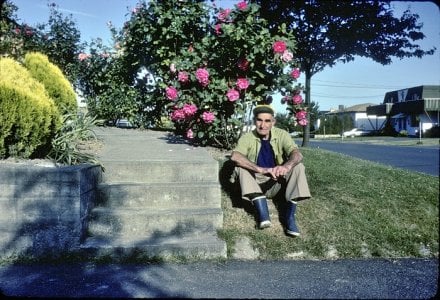
and 100%
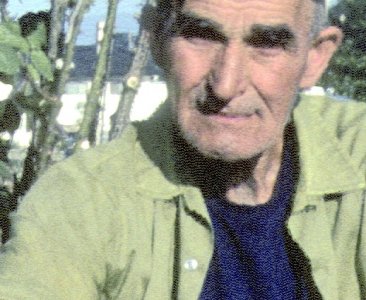
Now the D800E and 60mm micro...
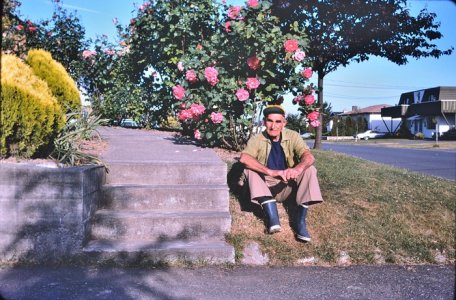
D800E at 100%
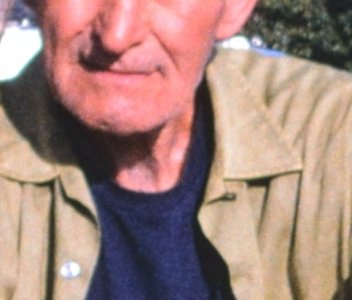
I didn't try to match colour, this was just to see if the technique had promise. At present I've obtained a Nikon bellows and a 55mm f/3.5 Micro-Nikkor complete with the slide copying unit. This project is presently on the back burner until there's more time. Before getting the Nikon bellows and slide copier I'd hoped to build something with a Pentax slide copier I'd been given. It's now not needed so is available if you can use it Boojum.
Glenn
The setup I used with the camera was a crude integrating sphere made from an ice cream carton with openings cut for the slide to lay over and another for a SB800 flash. An addition hole provided a place for small LED flashlight for focusing purposes. The flash on an extension cord took advantage of through the lens exposure.

First the CS-5000 which was scanned at 4000 DPI

and 100%

Now the D800E and 60mm micro...

D800E at 100%

I didn't try to match colour, this was just to see if the technique had promise. At present I've obtained a Nikon bellows and a 55mm f/3.5 Micro-Nikkor complete with the slide copying unit. This project is presently on the back burner until there's more time. Before getting the Nikon bellows and slide copier I'd hoped to build something with a Pentax slide copier I'd been given. It's now not needed so is available if you can use it Boojum.
Glenn
boojum
Mentor
Thanks for the test information. As an old coder hack I adhere to the "One test is worth a thousand opinions" school of thought. Opinions are just that and no more. I was looking at the Pentax bellows copier setup but the one I was looking at had an M42 threadset which is OK at the female end but does not seem workable at the male end. I may have missed something as I am not the sharpest knife on the tree. The plan was to use an A7M III with the Zeiss/Sony 55mm f/1.8 Sonnar. I do not think the Pentax would work because of that threadset though.A few years ago I decided to compare the results from my Nikon CS-5000 to what could be gotten from a Nikon D800E with 60mm micro-Nikkor
The setup I used with the camera was a crude integrating sphere made from an ice cream carton with openings cut for the slide to lay over and another for a SB800 flash. An addition hole provided a place for small LED flashlight for focusing purposes. The flash on an extension cord took advantage of through the lens exposure.
View attachment 4822555
First the CS-5000 which was scanned at 4000 DPI
View attachment 4822556
and 100%
View attachment 4822557
Now the D800E and 60mm micro...
View attachment 4822558
D800E at 100%
View attachment 4822559
I didn't try to match colour, this was just to see if the technique had promise. At present I've obtained a Nikon bellows and a 55mm f/3.5 Micro-Nikkor complete with the slide copying unit. This project is presently on the back burner until there's more time. Before getting the Nikon bellows and slide copier I'd hoped to build something with a Pentax slide copier I'd been given. It's now not needed so is available if you can use it Boojum.
Glenn
The next option is to use the Leica bellows. Would a good 50mm LTM work? Or hang the Leica bellows off the X2D and shoot with the super sharp Amotal or '51 KMZ J8. Can I rack out either option for a close focus of slides?
Using a Leica body I would opt for the M9 as I like the CCD sensor. The A7M III has pretty good color, not as good as the M9 and in my pinheaded opinion the X2D trumps all. I can pick up a Hasselblad bellows for less than an arm and a leg. But can I use the XCD 55V for macro work?? And then the slide mount and light. An LED can be a jury-rigged light source for copying.
Interesting, just like taking a coding problem to my neighbor at work talking about it, this problem has made me think that the Hasselblad route would be the best solution in terms of image quality and color.
If the XCD 55V would work on a bellows as a macro I can do the slides and also take pictures of bugs, nose hair, carpet lint and plant minutiae. Be ready for some really boring posts. ROTFLMAO You would only have yourselves to blame for aiding and abetting this crime so no whimpering. ;o)
Godfrey
somewhat colored
I have tested using a Hasselblad 907x/CFVII 50c copy camera setup for scanning, comparing it to the Leica M10/M and /R. I stopped because
I've used a Color-Skopar 50mm f/2.5 in conjunction with a BEOON and Leica M10-M copy setup as well, that's the closest thing I have to a Leica LTM 50mm lens. The Color-Skopar produces good results, the BEOON is compact and very easy to set up, but it is somewhat inconvenient with respect to handling the film or slides. Best thing to do would be to make a film carrier base unit for it, but it's best used for a couple of singleton frames per session rather than capturing a large volume of slides.
I've probably used/tried every combination of scanner and copy camera setup you can think of, and a few you probably haven't. My LR catalog includes over 14,000 scanned negatives, slides, and Polaroid prints amongst it's 256,000 image files.
A very successful setup for the copy camera is to use a high pixel count APS-C camera (Leica CL or equivalent) for 35mm slides. This is because you only need about 1:1.7 magnification and much less camera to subject distance, making the whole setup more stable and rigid. At base ISO, the dynamic range is nearly on par with the M10/R (presuming raw capture).
BTW: I wouldn't use an M9 as a capture body because you have no Live View with which to accurately focus a 1:1 capture. This isn't a limitation if you use a BEOON copy setup since the BEOON is supplied with its own viewing/focusing tools, it was made for use with LTM/M-mount film cameras.
G
- it is a very large and combersome setup for capturing 35mm sized negs (approximately 1.6:1 magnification required for a full frame capture)
- there was limited advantage over the Leica M based captures.
I've used a Color-Skopar 50mm f/2.5 in conjunction with a BEOON and Leica M10-M copy setup as well, that's the closest thing I have to a Leica LTM 50mm lens. The Color-Skopar produces good results, the BEOON is compact and very easy to set up, but it is somewhat inconvenient with respect to handling the film or slides. Best thing to do would be to make a film carrier base unit for it, but it's best used for a couple of singleton frames per session rather than capturing a large volume of slides.
I've probably used/tried every combination of scanner and copy camera setup you can think of, and a few you probably haven't. My LR catalog includes over 14,000 scanned negatives, slides, and Polaroid prints amongst it's 256,000 image files.
A very successful setup for the copy camera is to use a high pixel count APS-C camera (Leica CL or equivalent) for 35mm slides. This is because you only need about 1:1.7 magnification and much less camera to subject distance, making the whole setup more stable and rigid. At base ISO, the dynamic range is nearly on par with the M10/R (presuming raw capture).
BTW: I wouldn't use an M9 as a capture body because you have no Live View with which to accurately focus a 1:1 capture. This isn't a limitation if you use a BEOON copy setup since the BEOON is supplied with its own viewing/focusing tools, it was made for use with LTM/M-mount film cameras.
G
Last edited:
I used a BEOON when they were the 'in' retro device on RFF a few years ago, along with an LED light pad and a Beseler Negatrans negative carrier. The latter wouldn't be for use with transparencies of course. Needs a bit of experimentation to find the right combination of lens and extension to maximize the 35mm frame.
Agree, this works for occasional use, not for a large volume.
Agree, this works for occasional use, not for a large volume.
Godfrey
somewhat colored
I used the BEOON to capture a couple of dozen 35mm slides and negatives with a Leica M-D typ 262 body some years back. It's best to just follow the instructions and use a FF body and a Leica Summicron 50mm or similar lens (the Color-Skopar 50mm f/2.5 I mentioned in my earlier post works beautifully...), then it really doesn't need much experimentation at all and is very quick to setup, grab a few frames, and put away again. 
I tried to use it with the CL body, but it is rather inflexible about what lens you fit ... it doesn't give you a lot of options for getting the magnification and framing correct for an APS-C format capture body.
G
I tried to use it with the CL body, but it is rather inflexible about what lens you fit ... it doesn't give you a lot of options for getting the magnification and framing correct for an APS-C format capture body.
G
I had no issues maximizing the negative with either FF or APS-C, so anyone who wants to try a BEOON don't let the lack of a full-frame digital hold you back. Although I still suggest picking up a Minolta Dual Scan IV with a slide carrier instead.
Godfrey
somewhat colored
Heh ... Because I had it out on my desk, and had some old slides floating around my desktop, I decided to set it up and make a few captures...
Check out the others in the album if you care to ... Leica BEOON Macro Stand 2023
When it comes to film scanners, I much prefer the Nikon Coolscan V ED ... but whatever you prefer.
G
Check out the others in the album if you care to ... Leica BEOON Macro Stand 2023
When it comes to film scanners, I much prefer the Nikon Coolscan V ED ... but whatever you prefer.
G
boojum
Mentor
Well, G., you have been out there and made the mistakes and claimed the victories in the slide copying arena. The APS-C approach is an interesting one. I could use the Pixii for that. It has great detail and color and with the Amotal or the '51 KMZ J8 I might be able to get away with it. This rig does not have live view per se but IIRC it can be arranged with the most current firmware release and an iPad.
Am I OK with setting up focus for the first slide and having that work for the rest regardless of what way I go?
And if I go HB it would be with the X2D and that great XCD 55V which is the best lens I have. The old rhyme, "Big bugs have little bugs upon their backs to bite 'em and little bugs have lesser bugs and so on ad infinitum" seems what this lens is all about. It can just be set up on a tabletop, lighted, focused and then just progress. The live view is excellent. While APS-C would work I would guess that the HB route would render the better result. The trick is the bellows and the slide holder. This is shaping up to be a lot of work so that I can do a lot of work. Retirement is great.
Am I OK with setting up focus for the first slide and having that work for the rest regardless of what way I go?
And if I go HB it would be with the X2D and that great XCD 55V which is the best lens I have. The old rhyme, "Big bugs have little bugs upon their backs to bite 'em and little bugs have lesser bugs and so on ad infinitum" seems what this lens is all about. It can just be set up on a tabletop, lighted, focused and then just progress. The live view is excellent. While APS-C would work I would guess that the HB route would render the better result. The trick is the bellows and the slide holder. This is shaping up to be a lot of work so that I can do a lot of work. Retirement is great.
Godfrey
somewhat colored
If your setup configuration is rock stable and you can work the camera controls without moving or changing its position and focus setting, yes: I almost always do focus for the first frame in a session and leave it all alone for the entire session. I almost always am capturing from strips of negatives or transparencies.
HOWEVER, transparencies in projection mounts often have different amounts of "bow" in the film, depending on the specific film and mount, and best focus may vary quite a lot between different slides. Those kinds of originals will require re-focus much more frequent focus checking and re-focus work.
G
HOWEVER, transparencies in projection mounts often have different amounts of "bow" in the film, depending on the specific film and mount, and best focus may vary quite a lot between different slides. Those kinds of originals will require re-focus much more frequent focus checking and re-focus work.
G
boojum
Mentor
Good pointIf your setup configuration is rock stable and you can work the camera controls without moving or changing its position and focus setting, yes: I almost always do focus for the first frame in a session and leave it all alone for the entire session. I almost always am capturing from strips of negatives or transparencies.
HOWEVER, transparencies in projection mounts often have different amounts of "bow" in the film, depending on the specific film and mount, and best focus may vary quite a lot between different slides. Those kinds of originals will require re-focus much more frequent focus checking and re-focus work.
G
boojum
Mentor
I have found that the Epson V600 sensor is a CCD. That is a good thing if the sensor is good overall. Has anyone here used the V600 who can speak to the quality of detail and color? And what software? SilverFast has been mentioned. Epson has to package software to do the deal. Is it good or am I on the hook for additional software? The upside of the V600 for me is it is easy. It looks like it does a petty good job. Anybody's experience would be welcomed.
das
Well-known
My two cents is that the Minolta 5400 is an excellent product. Batch scans 35mm and slides. Wonderful results and works great with Vuescan. You can find them reasonably priced all day.
boojum
Mentor
It may be great but not available other than used. That is dicey on electronic gear and the eBay $549 is steep for a crap shoot on whether it will last. Thanks for the VueScan tip. Downloaded. ;o)My two cents is that the Minolta 5400 is an excellent product. Batch scans 35mm and slides. Wonderful results and works great with Vuescan. You can find them reasonably priced all day.
das
Well-known
If it helps, I bought mine in 2008 and it still works as new. I've seen them as low as $250. Probably still better and higher resolution than any new Plustek.It may be great but not available other than used. That is dicey on electronic gear and the eBay $549 is steep for a crap shoot on whether it will last. Thanks for the VueScan tip. Downloaded. ;o)
Share:
-
This site uses cookies to help personalise content, tailor your experience and to keep you logged in if you register.
By continuing to use this site, you are consenting to our use of cookies.





